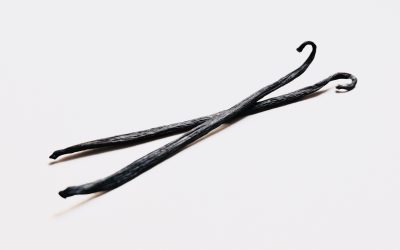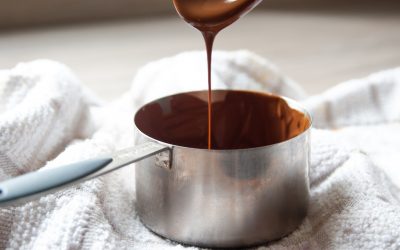Baking for diabetics can be one of the hardest things you have to do with pastry work since it all revolves around sugar. That doesn’t have to be the case though. There are a few recipes and substitutions that can really help.
Not all recipes can be substituted with just sweetener instead of sugar. In most cakes sugar plays a much more important role in the mix rather than just adding sweetness.
That means that with cakes and baked mixes you tend to have to be more careful, however with recipes that don’t need to set or bake it is much easier to adjust the sweetness to taste with sweetener
What effect does sugar have on baking?
Sweetening
Widely considered the only function of sugar, however it is more important in pastry goods than just providing sweetness.
Different sweeteners and sugars will all have their own degree of sweetness, for example, dextrose is used in savoury ice creams to provide the properties of sugar without the sweetness.
Tenderising
When sugar dissolves it interferes with gluten formation and other structures by attracting water away from the gluten eggs and starch that all need water to form.
Sugar also increases the temperature that starches gelatinize and proteins coagulate giving a more tender texture. However too much sugar will prevent any structures forming which means products won’t rise or rise and collapse as soon as it comes out of the oven.
Too low sugar content can be seen on a cake by large cracks in the surface where structure has formed too quickly, and steam has forced it’s way out of the top. Leaving a split in the top or side.
What diabetic substitutes are there?
Splenda
Splenda is a great substitute for sugar in a lot of cases. It is 600x sweeter than sugar which means you need to be careful with your quantities. This can be an easy fix for most recipes, however it may need to be played with when replacing sugar in recipes such as sponges where the sugar plays an important part in the structure and colour of the product.
Sweet ‘N Low
This is the sweetener that comes in bright pink packs. I used to use this a lot when I worked in hotels. It is pretty similar to Splenda and I use it in the same way.
Fructose
Fructose is naturally occurring monosaccharide found in honey, fruits, and most root vegetables. The powder form is sourced from beetroot, fruits, sugar cane, and corn. While fructose is the sweetest tasting sugar, it has a lower impact on blood sugars than glucose or sucrose (table sugar).
Studies have shown that both fructose and glucose are absorbed directly into the bloodstream. However fructose on the other hand doesn’t impact insulin levels. This is one of the reasons why fructose is a recommended ingredient for those who are diabetics or are going through a strict diet. Though it is slightly different in taste, the substitution of table sugar with fructose is rarely noticed.
If you’re using fructose in baking, you’ll need about 1/3 less fructose than table sugar, and you won’t need to compensate for the reduced volume. This is because fructose attracts more water and increases the height of baked items. It also makes baked goods remain moister for longer. Other than baking and crystallisation, fructose can also be added to glazes and dairy products to increase their viscosity. It will add more creaminess to ice creams, sauces, or marinades.
MANNITOL
What is it?
Mannitol is a sugar substitute with 50/60% sweetness of sucrose (standard sugar). It doesn’t increase blood sugar levels as much as sugar so it is an ideal replacement for diabetic diets. It is mainly used commercially as the crispy coating on chewing gum and also to lower calories in sugary drinks and protein shakes (2.6 calories per gram compared to 4 calories per gram in regular sugar).
How is it made?
Mannitol is found naturally in most fruit and vegetables, but the concentration varies drastically product to product. Watermelon, sweet potato and cauliflower are among the highest and used to extract most of what we buy for kitchen use. It can also be produced from starch or seaweed, but it is a more expensive and time-consuming process.
Mannitol purchased from companies like MSK comes in a crystalline form, which is how it is typically bought. The natural sugars from the fruits and vegetables (fructose) are reacted with hydrogen and nickel (hydrogenation) to separate the Mannitol from the fructose. It is then reduced and dried to sugar like odourless powder and packaged for sale.
How do I use it?
Typically for kitchen use Mannitol is heated gently to 180c and then used for dipping sweets and fruits, leaving a crispy opaque caramel shell on the outside. It Doesn’t absorb water from the until the air is at 98% humidity, which means it can be left out and also prepared in advance without the risk of the product going soft or soggy.
I recommend using Mannitol mostly for replacing sugar in recipes for diabetics, but it’s lower calorie count can also be useful depending on the type of product you are trying to produce. Comment below to share your thoughts, or any applications you have come across for using Mannitol in your kitchen.
ISOMALT
Isomalt is a substitute for sugar which is found in beetroot. It is a sugar alcohol that is mainly used as sugar because of its structural similarities. Isomalt is used over actual sugar because its melting temperature is higher. It also maintains its texture for longer and is stronger than table sugar. While it is not as sweet as sugar, it is diabetic friendly. Isomalt can be added with other substitutes to increase their sweetness.
Isomalt melts between 145-150ºC, this means that it won’t caramelise when heat is applied to it. For this reason, it is a preferred sugar when it comes to creating clear designs elements for cakes and other desserts. It can be used to create windows of gingerbread houses, gemstones, and sparkling mosaics that are non-cloudy and opaque. Once it is melted, it becomes very hot and sticky and is hard to remove. Therefore, it is recommended that you wear gloves when creating sugar work.
Benefits
High Heat Resistance: as the element has high heat resistance, it won’t caramelise as table sugar does. You can work with the sugar alcohol at normal cooking temperatures without altering its chemical structure. If you’re creating a dessert that needs to be boiled, using Isomalt will ensure that it develops and takes on their full flavour.
Absorbs Very Little Moisture
Its hygroscopicity is lower than other sugar alcohols or even sugar itself. This means you can store elements made with Isomalt easily.
Increased Solubility
24g will dissolve in 100ml of liquid at 24ºC, and its solubility will increase as the temperature is raised.
Diabetic cupcakes
Sponge
125g Soft flour
10g Baking powder
6 Tbsp Canderel or other Sweetener
125g Butter
2 Eggs
1 Tsp vanilla extract
Method
Beat the butter and sweetener together until light in colour.
Add the eggs slowly until all incorporated and then fold in all of the other ingredients
Spoon the mixture into cupcake cases on a cupcake baking tray and cook at 160c for about 10-12 minutes or a knife comes out clean.
Buttercream
Ingredients
50g Diabetic icing sugar (this will depend on what brand you are using so add to taste)
250g Unsalted butter
Seeds of 1 vanilla pod
Method
Whip all ingredients together in a food mixer with a whisk attachment until light and soft.
Pipe onto the cooled cupcakes with a piping bag fitted with a star nozzle
To grow your knowledge and learn new recipes every month sign up to The Online Pastry School for free here
To find out more about sugars and alternatives see here


